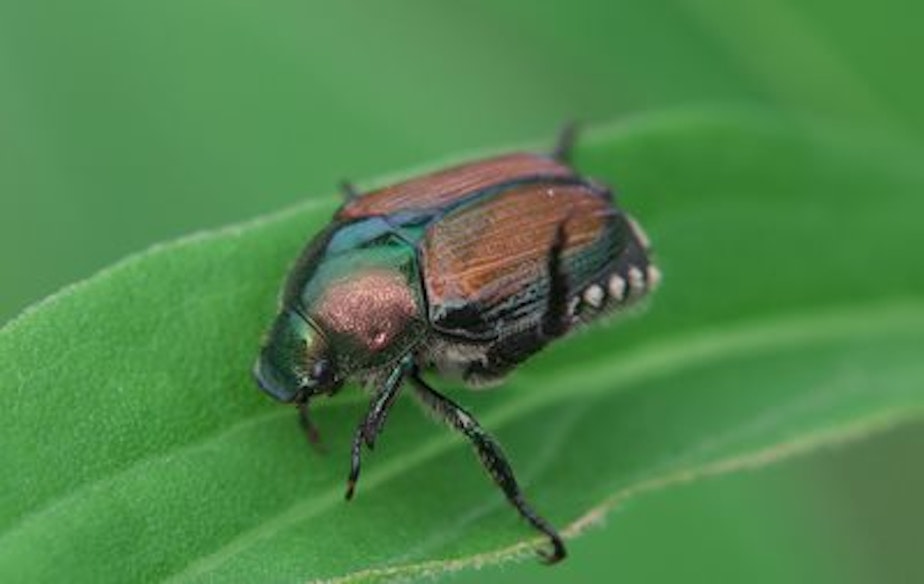In the Yakima Valley, tiny beetles are posing major problems for growers

Slugs, earwigs, spittle bugs, garden pests push us to scour the internet and shell out lots of money to remove them.
But in the Yakima Valley, one beetle is testing the lengths we'll go to protect our gardens, lawns, and crops.
The iridescent green and copper-colored bugs are creating major headaches for the state's Department of Agriculture and growers of some of Washington's biggest cash crops.
State officials say trapping and eradicating this beetle will come with a multimillion dollar price tag, and it'll take several years to determine if their efforts are successful.
Soundside host Libby Denkmann spoke to Crosscut reporter Mai Hoang about these pesky beetles. The species originally comes from Japan, but have been spotted in the U.S. since the early 1800s.
"One of the annoying things about this beetle is that it kind of hits in two ways," Hoang said. "...Where we're seeing it now is little larvae in the dirt. They basically eat up plant material. That's how they grow. They eat grass and dirt. The result is ... huge brown spots."
"As they grow into the green and copper beetle, they fly around and start eating up to 300 different types of plants, including roses, hops, cherries," she said. "That's kind of the double whammy. They can annoy you at the grass level. Then as adults they are flying around and eating roses, and that's where home gardeners have to watch out. Those roses are prime food material."
Sponsored
Recently, the beetles have been thriving in the Yakima Valley. Officials are attempting to eradicate them.
Listen to Soundside's full conversation with Hoang by clicking the audio above.
Editor's Note: After this Soundside story aired, our guest Mai Hoang corrected themselves to say that the Popillia japonica arrived in the U.S. in the 20th century -- not the 19th century.





